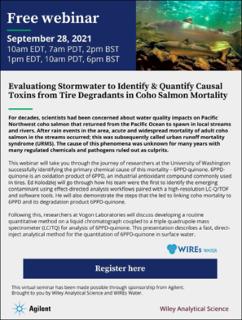| dc.contributor.author | Aarønes, Malin Røyset | |
| dc.contributor.author | Paus-Knudsen, Julie Sørlie | |
| dc.contributor.author | Nielsen, Anders | |
| dc.contributor.author | Rundberget, Thomas | |
| dc.contributor.author | Borgå, Katrine | |
| dc.date.accessioned | 2021-10-06T09:08:30Z | |
| dc.date.available | 2021-10-06T09:08:30Z | |
| dc.date.created | 2021-08-09T11:06:34Z | |
| dc.date.issued | 2021 | |
| dc.identifier.citation | Environmental Toxicology and Chemistry. 2021, 40 (10), 2781-2790. | en_US |
| dc.identifier.issn | 0730-7268 | |
| dc.identifier.uri | https://hdl.handle.net/11250/2788042 | |
| dc.description.abstract | Bumblebees can be exposed to neonicotinoid pesticides through nectar and pollen collected from treated crops, which can cause lethal and sublethal effects in these nontarget pollinators. However, the body distribution of the compound after exposure to neonicotinoids in bumblebees is not well studied. Bumblebee colonies (Bombus terrestris, n = 20) were exposed to field-realistic concentrations of clothianidin through artificial nectar (3.6–13 µg/L) for 9 d. Comparison of the nominal with the measured exposure in nectar indicated good compliance, confirming the applicability of the method. When quantified, clothianidin showed a concentration-dependent occurrence in the head and body of workers (head: <0.2–2.17 µg/kg; body: <0.2–3.17 µg/kg), and in the body of queens (<0.2–2.49 µg/kg), although concentrations were below those measured in the nectar (bioaccumulation factor = 0.2). Exposure to clothianidin did not affect mortality nor brood production, nor did it have a statistically significant effect on nectar consumption and size of food storage. However, visual inspection suggests higher nectar consumption of nectar with low clothianidin content compared with nectar with no or high clothianidin content. Our results show that dietary clothianidin is taken up in bumblebees, but does not bioaccumulate to elevated levels compared with exposure. Still, clothianidin may elicit responses that affect feeding behavior of the pollinator B. terrestris, although our endpoints were not significantly affected. | |
| dc.language.iso | eng | en_US |
| dc.publisher | Wiley | en_US |
| dc.rights | Attribution-NonCommercial-NoDerivatives 4.0 Internasjonal | * |
| dc.rights.uri | http://creativecommons.org/licenses/by-nc-nd/4.0/deed.no | * |
| dc.title | Within-Body Distributions and Feeding Effects of the Neonicotinoid Insecticide Clothianidin in Bumblebees (Bombus terrestris) | en_US |
| dc.type | Peer reviewed | en_US |
| dc.type | Journal article | en_US |
| dc.description.version | publishedVersion | |
| dc.source.pagenumber | 2781-2790 | en_US |
| dc.source.volume | 40 | en_US |
| dc.source.journal | Environmental Toxicology and Chemistry | en_US |
| dc.source.issue | 10 | en_US |
| dc.identifier.doi | 10.1002/etc.5154 | |
| dc.identifier.cristin | 1924659 | |
| dc.relation.project | Norges forskningsråd: 268415 | |
| cristin.ispublished | true | |
| cristin.fulltext | original | |
| cristin.qualitycode | 2 | |

